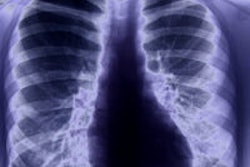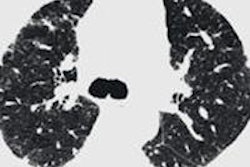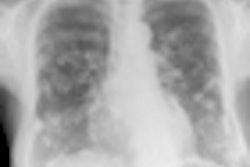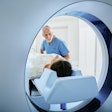As role extension for radiographers continues to come under serious scrutiny across much of Europe, evidence is mounting that they can achieve particularly high standards in chest reporting.
Radiographers are now reporting chest examinations in at least 11 U.K. sites, and the Department of Health has suggested that this practice could increase in the future, according to Keith Piper, the director of the master's of science in clinical reporting program at Canterbury Christ Church University in Canterbury, U.K. Plain films still account for 62% of all examinations carried out by imaging departments in the U.K., and about 20% of them are of the chest.
More than 40 radiographers have now completed the adult chest module that forms part of the postgraduate certificate (PgC) in clinical reporting at Christ Church University. The scheme is accredited by the U.K. Society of Radiographers. Piper has analyzed the results of the objective structured examination (OSE) of the first six cohorts of radiographers who successfully completed the program, and he presented the findings at the 2011 U.K. Radiological Congress (UKRC 2011), held last month in Manchester.
|
A total of 100 chest examinations were included in the OSE (see table). Examinations were only included when there was agreement among the reports of three experienced radiologists. The overall agreement rate was 89%, and the mean sensitivity was 95.1% and the mean specificity was 96.3%. Previous research investigating variations between experienced radiologists in the interpretation of accident and emergency radiographs has demonstrated agreement rates of between 81% and 89%, he stated.
Piper stressed that the study included radiographs of patients referred from outside of accident and emergency, and although the findings suggest that the agreement rates for appropriately educated and trained radiographers is likely to be similar, further studies are necessary in this area.
"Further work is also needed to confirm the clinical application of these initial encouraging findings, which suggest that more radiographers may be able to contribute to this aspect of the reporting service," he noted.
Piper, who won the Beth Whittaker Prize for Best Poster at UKRC 2011, is also working on MRI reporting by radiographers, including the evaluation of accredited postgraduate programs, and is studying the implementation of MRI reporting by radiographers into clinical practice, in collaboration with the York Trials Unit at the University of York in the U.K. He has a keen interest in the effect of education and training on image interpretation, as well as the role development in radiography, being a member of the U.K. Society of Radiographers' Special Interest Group in Medical Image Interpretation.
Canterbury Christ Church's master's of science course in clinical reporting is designed for practitioners who wish to enhance their knowledge and skills in the interpretation of medical images. It provides support for developing service requirements for reporting radiographers at consultant and advanced practitioner levels. A module focuses on the adult chest. Click here for more details, or send an email to Keith Piper.



















